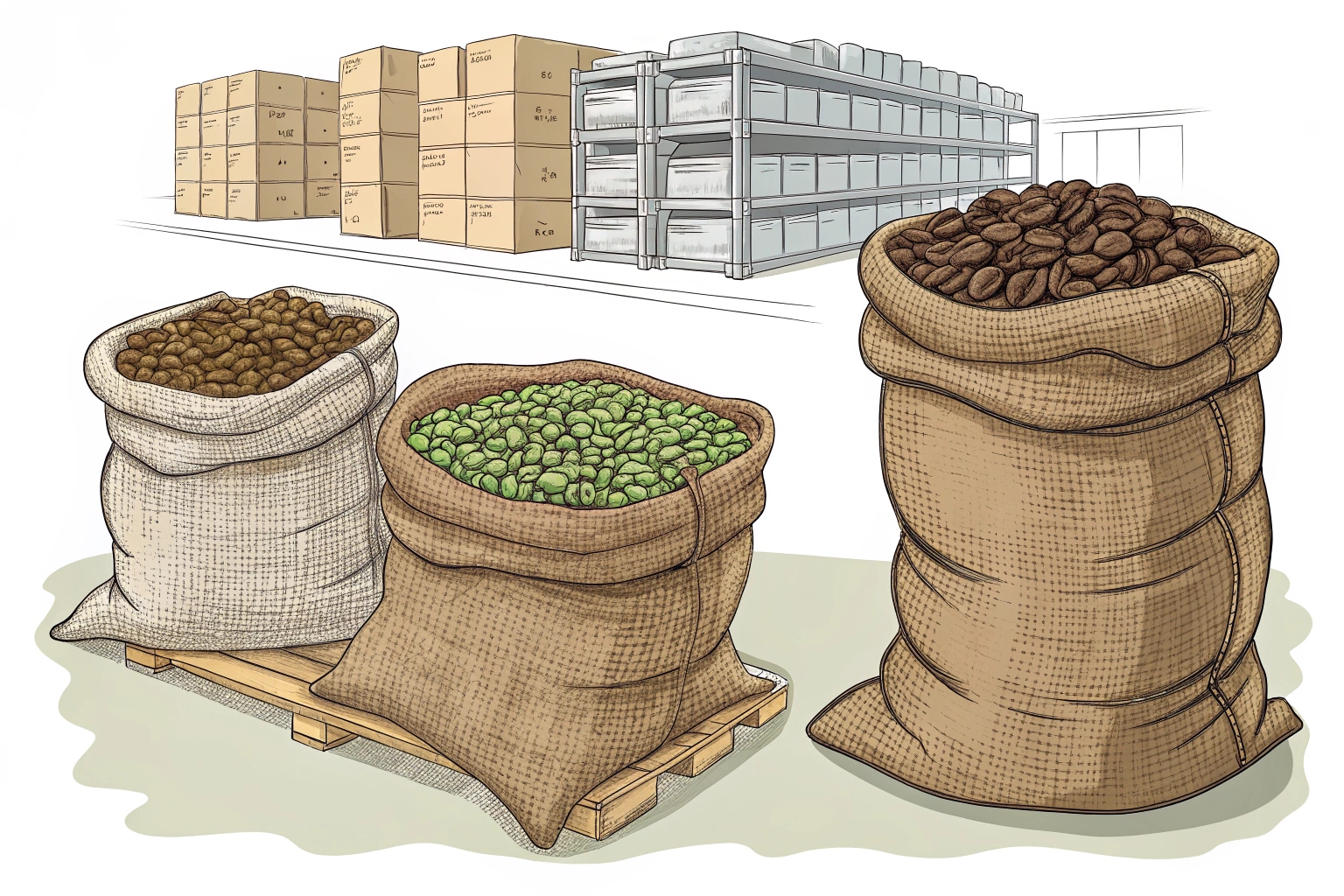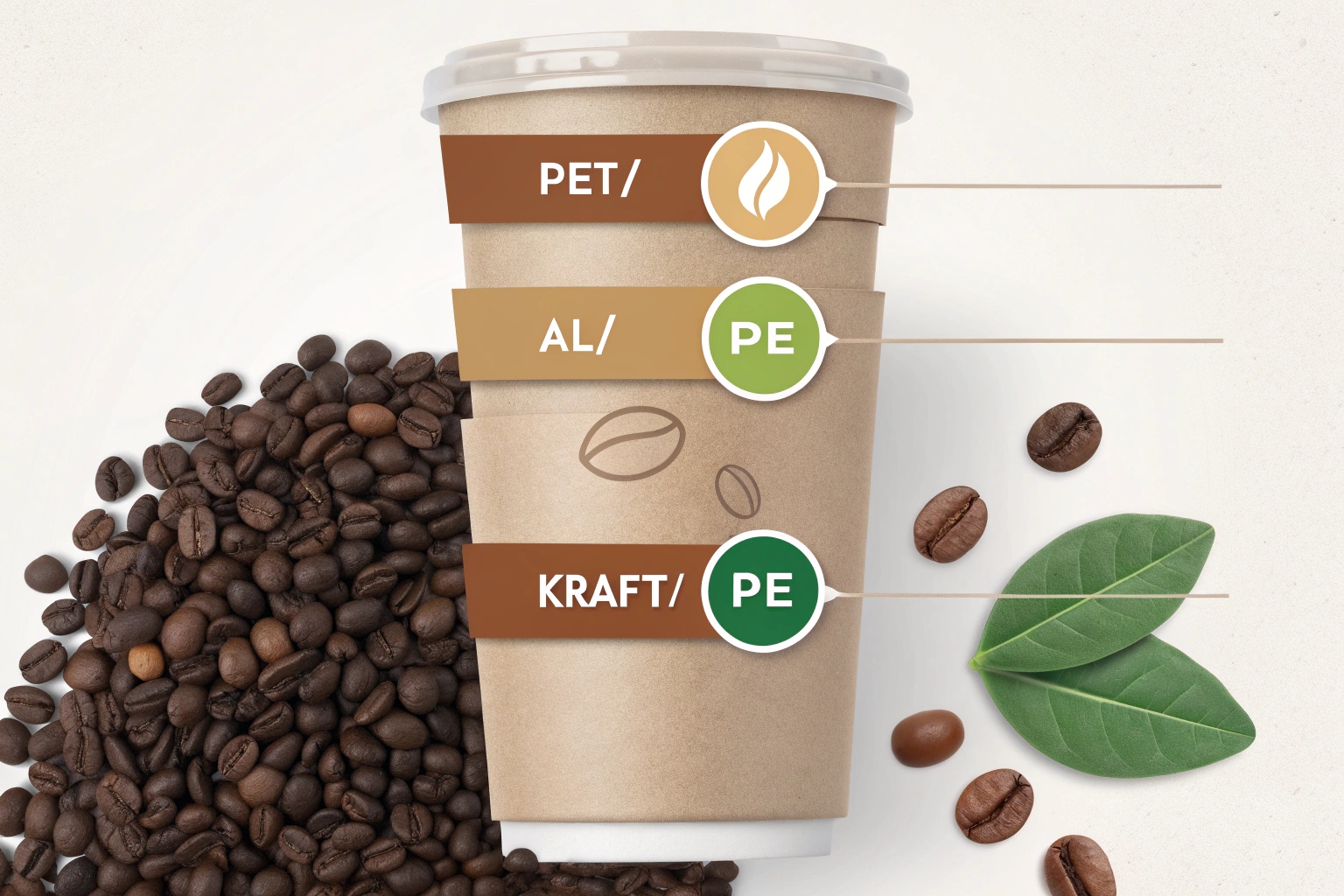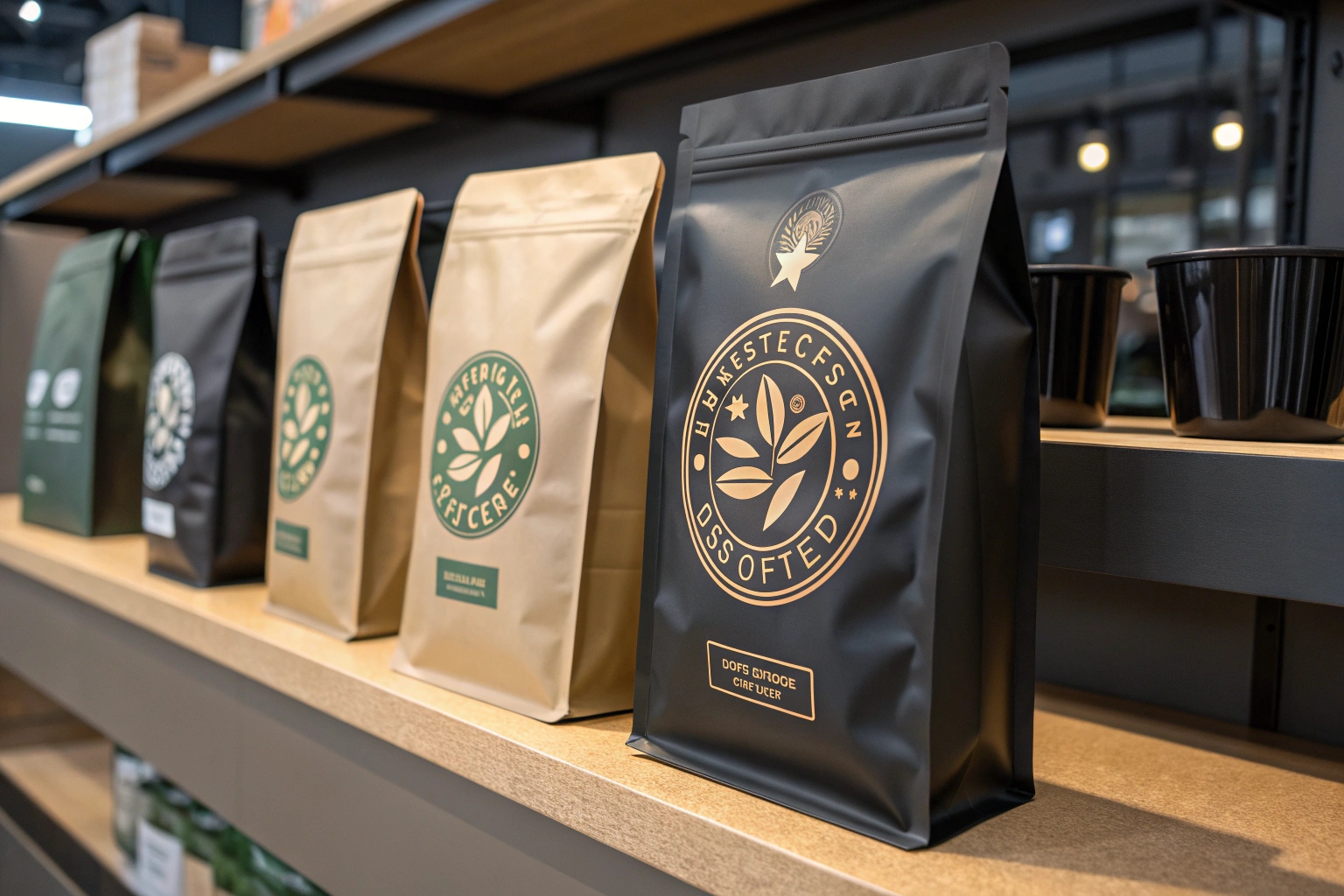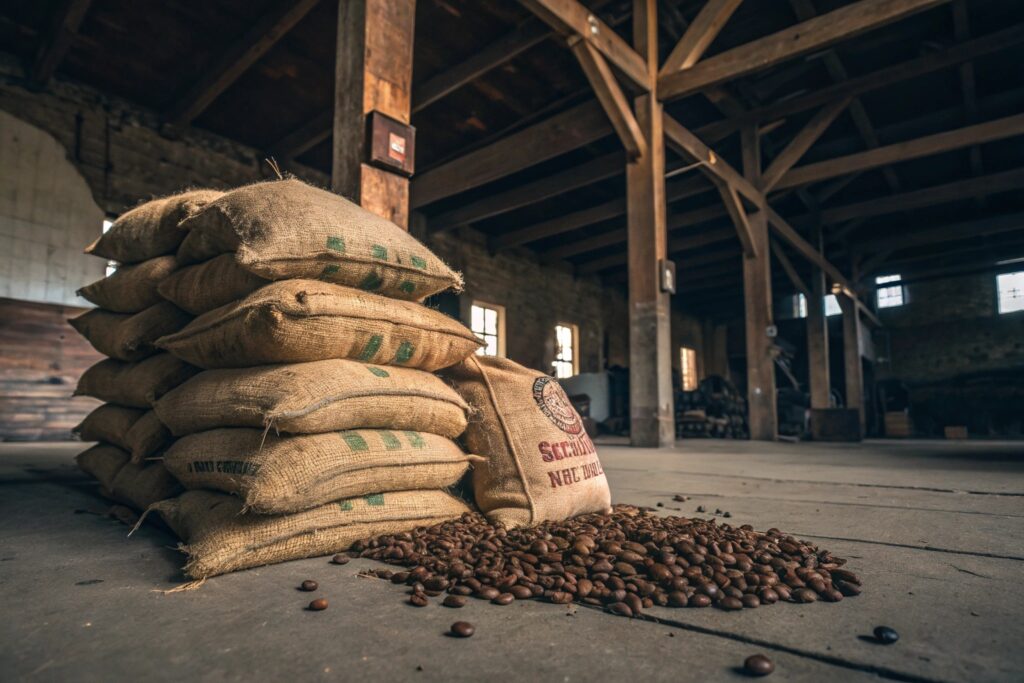Many coffee businesses struggle with choosing between traditional burlap sacks1 and modern flexible packaging. The wrong packaging choice can lead to spoilage or customer complaints.
Flexible packaging2 is more suitable for long-distance shipping and long-term storage of coffee beans, while burlap bags are ideal for bulk, short-term transport.
I used to think burlap was the go-to choice until one of my clients had an entire shipment rejected due to moisture damage3. That was the moment I realized packaging isn't just about tradition—it's about function.
What kind of bags are used to transport or store coffee beans?
Coffee travels a long way before it lands in your cup. But what keeps it fresh during this journey?
Raw coffee beans are often shipped in burlap or jute sacks, while roasted beans are packaged in multi-layered flexible bags4 for protection and shelf life.

Dive Deeper: The difference between green beans and roasted beans packaging
When shipping green (unroasted) beans, most exporters use 60–70 kg burlap sacks1. These allow air circulation and prevent mold. However, burlap bags don’t provide moisture or odor barrier. That's why for high-end green beans, some exporters now line burlap with GrainPro or PE liners5.
For roasted beans, flexible packaging is standard. Here's a comparison:
| Bag Type | Material | Usage | Pros | Cons |
|---|---|---|---|---|
| Burlap Sack | Jute | Green beans only | Breathable, eco-friendly | No moisture protection |
| Kraft with Liner6 | Paper + PE | Roasted beans | Affordable, semi-barrier | Shorter shelf life |
| Foil Stand-Up Pouch | PET/AL/PE | Premium roasted beans | Excellent barrier, resealable | Higher cost |
| Valve Bag | Multi-layered | Roasted beans with gas | Freshness, degassing valve | Not recyclable (most cases) |
The choice isn’t either-or. It's about stage. Use burlap for early logistics. Then switch to flexible packaging for brand protection and shelf presence.
How do they ship coffee beans?
You might wonder what happens between the coffee farm and your factory. How do beans travel across oceans?
Coffee beans are usually exported in containerized shipments using pallets stacked with burlap sacks1 or boxed flexible pouches.
During my recent visit to a coffee importer in Melbourne, I saw how a single 20-foot container can hold up to 275 burlap sacks1. These are either stacked loose or palletized. But for roasted beans, they are boxed in smaller flexible pouches, usually 250g to 1kg, then shipped in cartons.
Dive Deeper: Logistics impact packaging choice
The choice of transport—air, sea, or land—also affects packaging decisions:
Sea Freight (most common):
- For green beans: Burlap with liner is enough.
- For roasted beans: Must use vacuum-sealed or nitrogen-flushed pouches7 to avoid oxidation during the long trip.
Air Freight (rare, expensive):
- Often used for limited edition micro-lots.
- Lightweight kraft/flexible bags are favored to reduce cost.
Final Mile:
Once in the destination country, beans are moved in:
- Bulk for roasters: Still in original sacks or big rolls.
- Retail-ready: In labeled, sealed flexible bags with zipper or valve.
At IMIPAK, we’ve designed packaging that handles both extremes—long sea journeys and short shelf lives—without compromising freshness.
What is the suitable material for coffee packaging?

Coffee is sensitive. Bad packaging equals stale coffee. So, what materials actually protect coffee well?
PET/AL/PE or Kraft/PE laminate materials are most suitable for roasted coffee, offering barrier protection against oxygen, moisture, and light.
Dive Deeper: Why barrier layers matter in coffee packaging
Roasted beans release CO₂ and absorb oxygen and odors. Here's how each layer helps:
PET (Polyester):
- Strong outer layer, resists puncture.
- Holds graphics well.
AL (Aluminum Foil):
- Key oxygen and light barrier.
- Keeps flavor and aroma intact.
PE (Polyethylene):
- Heat sealable, food-safe inner layer.
If sustainability matters, some customers opt for Kraft paper + PLA or PE combinations. They’re compostable or recyclable but with shorter shelf life.
We help our clients select the right film structure based on:
- Expected shelf life
- Type of roast
- Storage conditions
- Shipping method
Also, we recommend adding degassing valves8 for packaging fresh roast. It allows CO₂ to escape without letting oxygen in.
What are the packaging requirements for coffee beans?
Packaging isn’t just about looks. There are rules. So what standards do you need to meet?
Coffee packaging must meet food safety standards9, protect from light, air, moisture, and include labeling for traceability and compliance.

Dive Deeper: Regulatory, practical, and buyer expectations
Whether shipping to the US, Europe, or Asia, you’ll face specific packaging requirements:
1. Barrier Performance:
- Oxygen Transmission Rate (OTR)10 and Moisture Vapor Transmission Rate (MVTR) should be low.
- This prevents oxidation and mold.
2. Labeling Requirements:
- Include product name, origin, roast date, expiration date, weight, and certifications (e.g. organic, fair trade).
- For exports to EU/US: FDA or EFSA compliant materials.
3. Certifications:
- Many buyers now ask for BRC, ISO22000, or FSC-certified packaging11.
- These confirm food safety and sustainability.
4. Shelf Impact:
- For retail, the bag must stand up, have zipper reclosure, and be easy to print with custom branding.
At IMIPAK, we provide COAs and third-party certifications with every order. One of my clients almost lost a major retail account in Germany due to a supplier's unverified claim. That’s why we handle testing, not just printing.
Conclusion
Choose flexible packaging for quality and control—burlap is just the beginning.
-
Learn about the traditional use of burlap sacks and their advantages in coffee transport. ↩ ↩ ↩ ↩
-
Explore how flexible packaging enhances the freshness and shelf life of coffee during shipping. ↩
-
Understand the impact of moisture on coffee quality and how to prevent it. ↩
-
Find out how multi-layered bags protect roasted coffee and extend its shelf life. ↩
-
Discover how these liners improve the protection of green coffee beans. ↩
-
Explore the benefits of using Kraft with Liner for roasted coffee beans. ↩
-
Learn how these pouches prevent oxidation and maintain coffee freshness during transport. ↩
-
Understand the importance of degassing valves in maintaining coffee freshness. ↩
-
Explore the essential food safety standards that coffee packaging must meet. ↩
-
Learn why OTR is crucial for preventing oxidation in coffee packaging. ↩
-
Discover the significance of these certifications in ensuring food safety and sustainability. ↩


